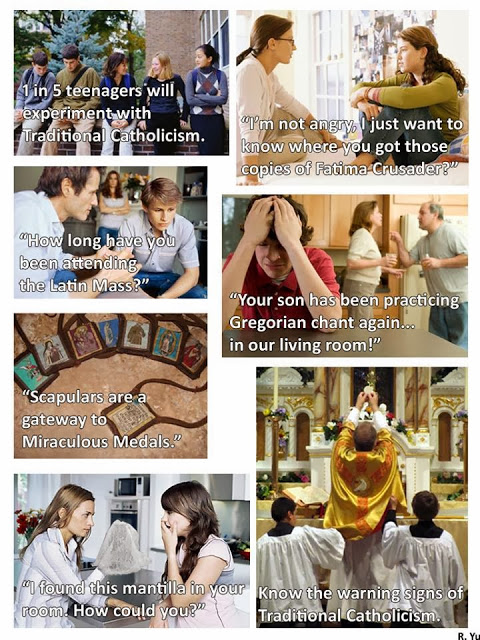Give beauty back, beauty, beauty, beauty, back to God, beauty’s self and beauty’s giver.
Young people of every generation have their own slang and their own priorities. One of the expressions that comes up in young adults’ conversations about Church art and catechesis is “cringe.” Cringe is what young people experience when older people are trying too hard to meet them at their (supposed) level. This is one of the funnier memes used to express this experience.

Well-meaning efforts to reach devout young people often fail on this account: to the young people themselves, there is an obvious and embarassingly overeager desire to connect with them. The problem is more than just the lack of respect for oneself and others that this implies. The main problems, as expressed by the young people, include the following:
- Older people guess, wrongly, about what young people need
- Older people impose unwanted, supposedly relevant experiences on young people
- Older people’s ideas of the relevant are often outdated
- Older people do not listen to young people express their own preferences
Just to focus on this last point, it seems undeniable that young people who are serious about their faith tend to prefer more traditional expressions of worship than older people do. Increasingly, the “guitar Mass” is attended by older people, and the more solemn Masses are attended by young people. Young women wear veils. Young people kneel for Communion and receive on the tongue. Young people crowd Masses in the Extraordinary Form. In short, we have a full-blown “generation gap,” only this time–51 years now after the “Summer of Love”–only this time it is upside down. The devout young are not the revolutionaries, but the custodians of something that is deeper and richer than themselves.
Now this is not to say that all young people like traditional expressions, nor that older people all like casual expressions of liturgy. And the existence of a variety of expressions need not be a serious point of contention. It seems to me that young people would be perfectly satisfied if they would only be allowed to continue growing in their faith in the way that seems best to them. But they are not.
Because older people will not let them.
A number of memes illustrate some of the frustration that young people feel when trying to make their needs known. This older one plays on the parental intervention that would happen when a child is found to be using some sort of contraband.

I think that the Church should make a commitment to meet young people where they really are, instead of what often seems to go on: We meet young people where we would like them to be.
There’s a nice story about Walker Percy’s conversion to Catholicism. When he was in college, one of his fraternity brothers, who was otherwise a perfectly normal fraternity brother, used to wake up at the crack of dawn to go to daily Mass. This is the kind of witness that awakes the imagination: the beauty of a committed Catholic life in the midst of the world, like a small but authentic amount of leaven. It is fascinating and compelling and changes minds and hearts.
There’s also an odd statistic that came out a few years ago. One out of six young converts to Christianity attributes that conversion to a visit to a church building. The researchers were astonished.
I think if we really, really listen to the hopes young people have for the Church we would be astonished as well, in a happy way that leads to renewal for us all.
